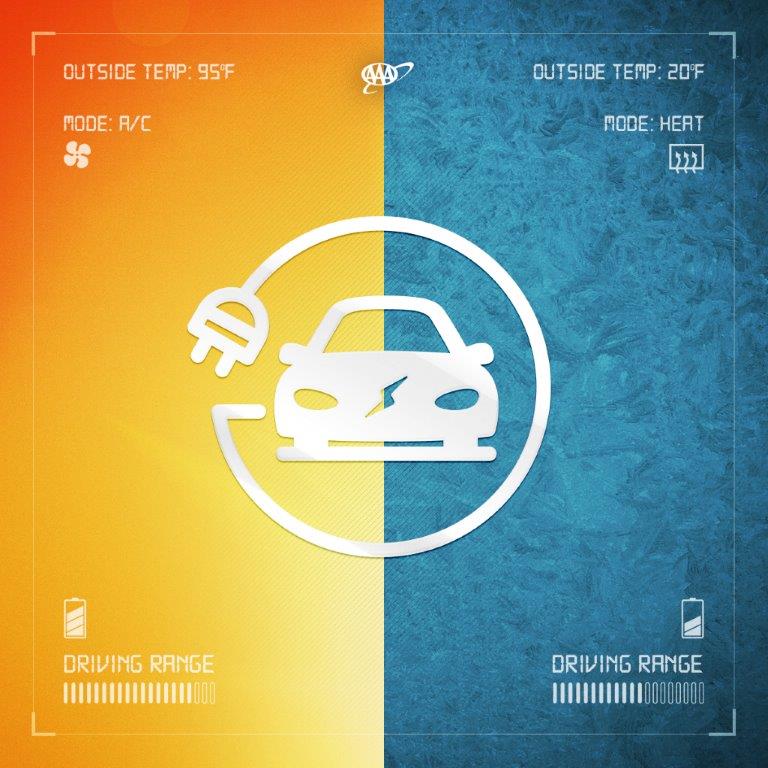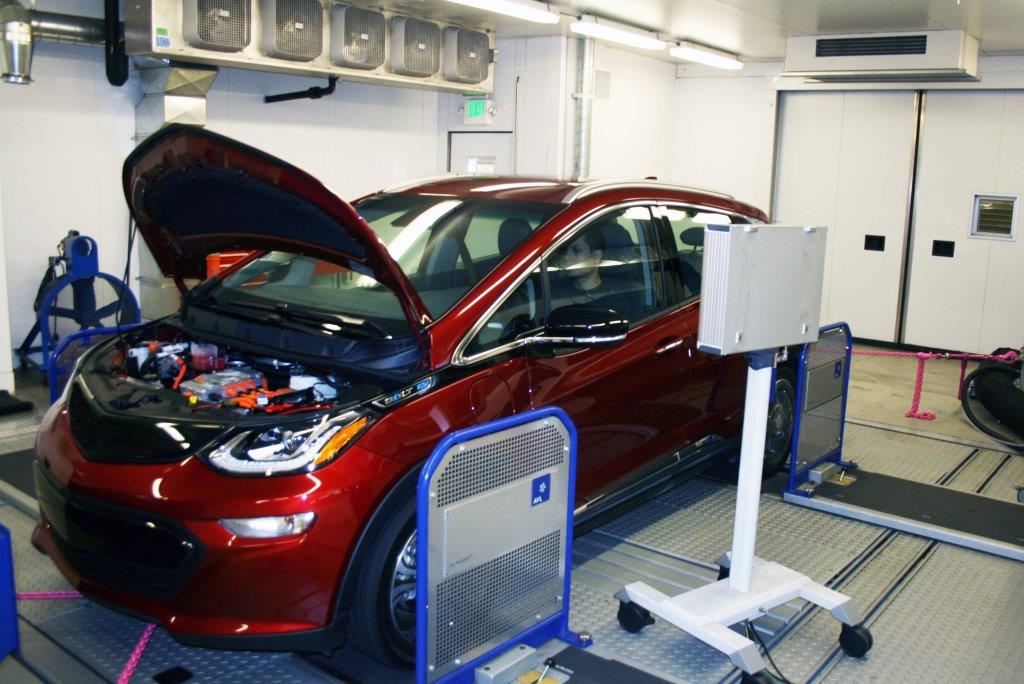Cold and hot weather can have significant impact
PORTLAND, Ore., – Freezing temperatures and hot weather can significantly reduce the driving range of electric vehicles. New research from AAA reveals that when temperatures dip to 20°F and the HVAC system is used to heat the inside of the vehicle, the average driving range of an EV decreases by 41 percent. Likewise, when temps heat up to 95°F and air-conditioning is used inside the vehicle, driving range is reduced by 17 percent.
The AAA research finds that in cold weather, for every 100 miles of combined urban/highway driving, the range at 20°F would be reduced to 59 miles. When colder temperatures hit, AAA urges electric vehicle owners to be aware of a reduction in range and the need to charge more often to minimize the chance of being stranded by a dead battery.
In hot weather, the AAA research finds that for every 100 miles of combined urban/highway driving, the range at 95°F would be reduced to 83 miles.
Additionally, an electric vehicle with a compromised driving range will require charging more often, which increases the cost to operate the vehicle. For instance, AAA’s study found that the use of heat when it’s 20°F outside adds almost $25 more for every 1,000 miles when compared to the cost of combined urban and highway driving at 75°F.
“The AAA research shows that electric vehicles thrive in more moderate climates. The reality is that most of us live in areas like Oregon where we do experience extreme weather from time to time, so EV drivers need to know how hot and cold temperatures can impact their driving range,” says Marie Dodds, public affairs director for AAA Oregon/Idaho.
AAA tested five electric vehicles, all with a minimum EPA estimated driving range of 100 miles, in partnership with the Automotive Club of Southern California’s Automotive Research Center. The vehicles were a 2018 BMW i3s, 2018 Chevrolet Bolt, 2018 Nissan Leaf, 2017 Tesla Model S 75D and a 2017 Volkswagen e-Golf.
Real-world driving conditions were simulated using a dynamometer, essentially a treadmill for cars, in a closed testing cell where ambient temperature could be closely controlled. To determine the effects on driving range, scenarios for cold and hot weather conditions – both when using HVAC and not – were compared to those of driving with an outside temperature of 75°F.
A 2018 Chevrolet Bolt (left) and 2017 Tesla Model S 75D were two of the test vehicles.
AAA has tips for electric vehicle owners during the colder and hotter times of the year to help offset potential reductions in driving range:
- Plan ahead. When drivers are aware of the weather conditions before heading out, they can plan for more frequent stops for charging as well as identify the location of charging stations. Drivers can access these locations through AAA’s Mobile app or TripTik Planner.
- Make time to pre-heat or cool down the inside of the vehicle while still connected to the charger. This will reduce the demand on the vehicle’s battery to regulate cabin temperature at the onset of driving.
- If possible, park the vehicle in a garage to help stabilize cabin temperature.
While electric vehicle range performs best in areas with warm weather year-round such as Florida, Hawaii and California, drivers in other parts of the country shouldn’t be discouraged. Owning an electric vehicle in these regions just requires some additional planning.
“Electric vehicles continue to become more popular, and there are more designs and options on the market than ever before,” adds Dodds. “As long as drivers understand that there are limitations when operating electric vehicles in more extreme climates, they’re less likely to be caught off guard by a drop in driving range.”
Previous AAA research has found that interest in electric vehicles continues to gain momentum with 20 percent of drivers saying they would likely go green when considering their next vehicle purchase. With lower-than-average ownership costs, increased driving ranges and the latest advanced safety features, AAA believes there is a strong future for electric vehicles. To help “green” car shoppers make an informed choice, AAA conducts independent, rigorous test-track evaluations of plug-in hybrids, hybrid and fuel-efficient, gas-powered vehicles and releases the results every spring in its annual Green Car Guide.
About the research:
AAA conducted primary research in partnership with the Automotive Club of Southern California’s Automotive Research Center (ARC) in Los Angeles, California to understand impacts of ambient temperature on electric vehicle driving range with and without the use of the HVAC system. The vehicles were tested using the ARC’s climate controlled test cell and state of the art chassis dynamometer and data logging equipment.
Test vehicles were selected using a pre-determined set of criteria such as availability for sale throughout the U.S. with a minimum EPA estimated driving range of 100 miles. One vehicle per manufacturer was tested to prevent overrepresentation of a single brand. Additional information on methodology can be found in the full report here.
AAA news releases, high resolution images, broadcast-quality video, fact sheets and podcasts are available on the AAA NewsRoom at NewsRoom.AAA.com.




